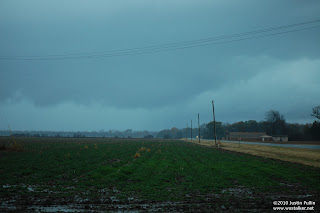Chases: 8 (1/20, 1/23, 3/27, 4/2, 4/24*, 5/1**, 5/19*, 12/31)
Successful Chases: 5 (3/27, 4/24, 5/1, 5/19, 12/31)
Busts: 3 [1/20 (class), 1/23, 4/2]
Storms Intercepted: 12
Tornadoes: 5 [Strongest: EF4 (4/24), Weakest: EF0 (5/1)]
Funnels:4
Wall Clouds:12
Largest Hail Encountered: Dime sized (.75 in)
Strongest Winds Encountered: ~80 mph
States Chased In: LA, AR, MS, TX, OK
*denotes days where tornadoes were observed
**denotes multiple tornadoes observed
Successful Chases: 5 (3/27, 4/24, 5/1, 5/19, 12/31)
Busts: 3 [1/20 (class), 1/23, 4/2]
Storms Intercepted: 12
Tornadoes: 5 [Strongest: EF4 (4/24), Weakest: EF0 (5/1)]
Funnels:4
Wall Clouds:12
Largest Hail Encountered: Dime sized (.75 in)
Strongest Winds Encountered: ~80 mph
States Chased In: LA, AR, MS, TX, OK
*denotes days where tornadoes were observed
**denotes multiple tornadoes observed
*Note that the tornado on 5/19 was rainwrapped and was picked out of the rain due to violent left to right motion during post chase video analysis.
*Also, rain wrapped tornado was witnessed on 12/31, however funnel could not be seen, nor could violent left to right motion be made out in the rain. Power flashes were observed however.
Recap:
1/20: First tornado outbreak of the new decade. Clay, Cooper and I could not get out early due to an afternoon class. This caused us to miss the show, including the EF-3 tornado that impacted Waskom, TX.
1/23: Still reeling from the missed opportunity, Clay, Cooper and I chased a marginal slight risk across Southern Arkansas and busted badly due to a lack of instability. Thank you stratus clouds!
3/27: Targeted Central Arkansas while most other chasers targeted the OK/MO border due to a greater tornado risk. Enjoyed an LP supercell event across central Arkansas and intercepted multiple storms for the first time. I witnessed the hail shaft of one of the storms cross I-40 during rush hour just outside of LIT. I also experienced ~60 mph winds 4 miles north of Stuttgart associated with a bowing segment in the squall line that formed after the sun set.
4/2: Still feeling chase fever, I joined Wheeler, Cooper, and Ostarly on a slight risk chase over NE Texas. I initially targeted Mt. Pleasant, TX, however we hung out in SHV and accessed the situation due to lingering stratus that was surpressing daytime heating over the target area. Storms did initiate and went through the target area, but were only marginally severe at best. Again, morning crapvection and stratus won the battle that day….
4/24: This was a day of firsts. I finally intercepted my first tornado with Cooper in the Mississippi Delta. Unfortunately, it was a killer EF4. We also witnessed extensive tornado damage for the first time. In addition, I experienced the worst RFD to date associated with that storm and punched into the “bear’s cage” for the first time on this day.
5/1: Witnessed multiple tornadoes for the first time across Central Arkansas. All of them were brief however, leaving me feeling teased by Mother Nature at the end of the day…
5/19: Didn’t do the best job at forecasting on this day and played catch up for most of the afternoon. Cooper and I did witness a rainwrapped tornado around the Dover area as we were moving north to get in better position to intercept the storm. We also witnessed a brief funnel that got halfway to the ground as the storm was gusting out. This was not my favorite chase for a lot of reasons, but mainly due to the insane amount of traffic.
12/31: Chased in the Louisiana Delta region and across Central Mississippi with Cooper. We bagged two wall clouds on a single storm as it went through a cycle just west of Newellton, LA and witnessed a rain wrapped tornado move through the Richland/Pearl/Jackson, MS area. However, no violent left to right motion was noted from our location and we did not see the condensation funnel.
-JP



